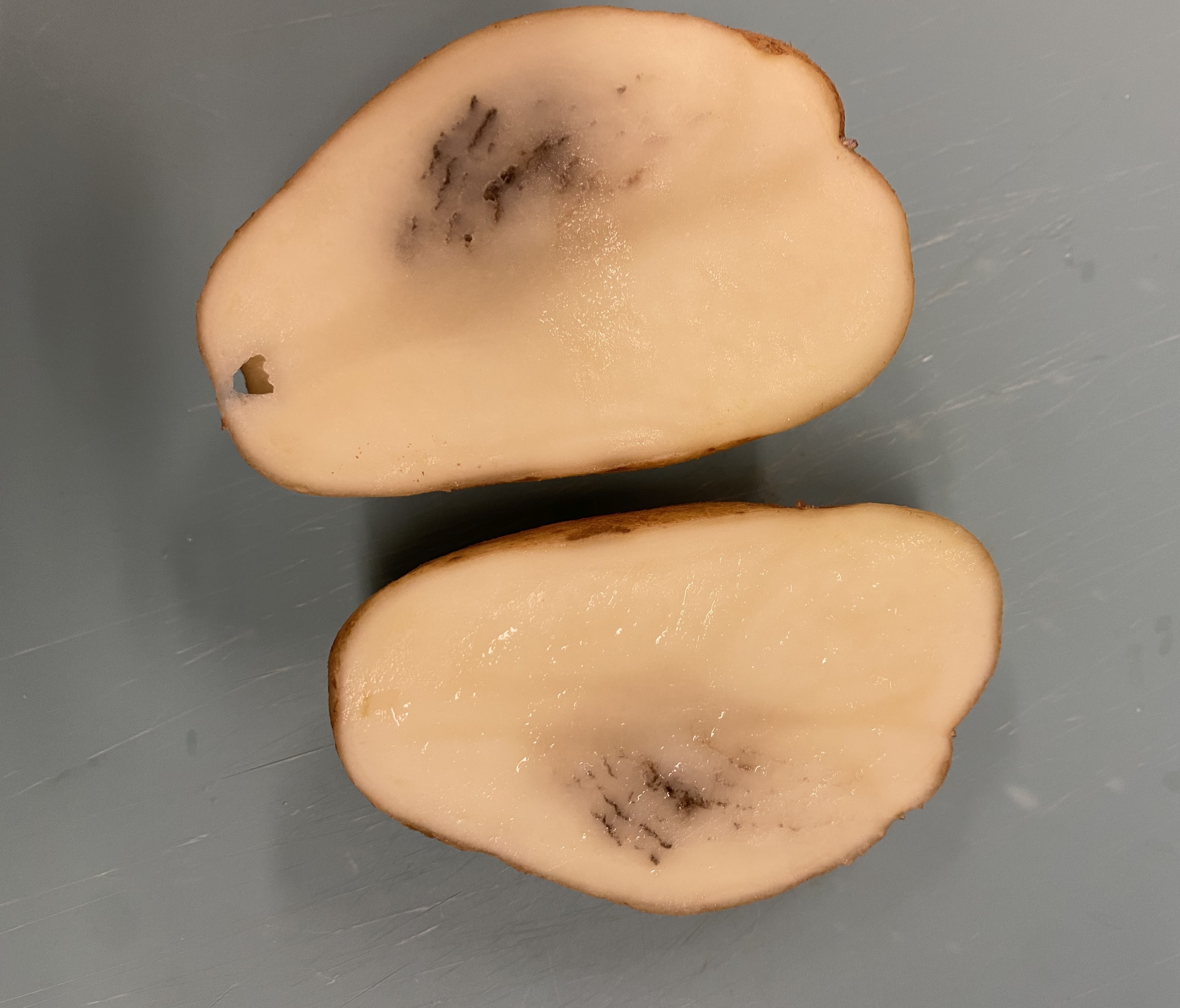What is Potato mop-top virus?
- Potato mop-top virus (Pomovirus solani) is a viral disease of potatoes that affects the growth of potato plants and the quality of tubers.
- The virus causes brown flecks, lines and rings on the inside and outside of tubers.
- Symptoms may only be visible once the tubers are cut open, and some infected potatoes may not show any symptoms at all.
- If the infection came from the mother tuber, yellow patches can appear on the leaves of the plant.
- The severity of symptoms depends on the potato variety and how the plant was infected
- Tubers infected by the virus are safe to eat.
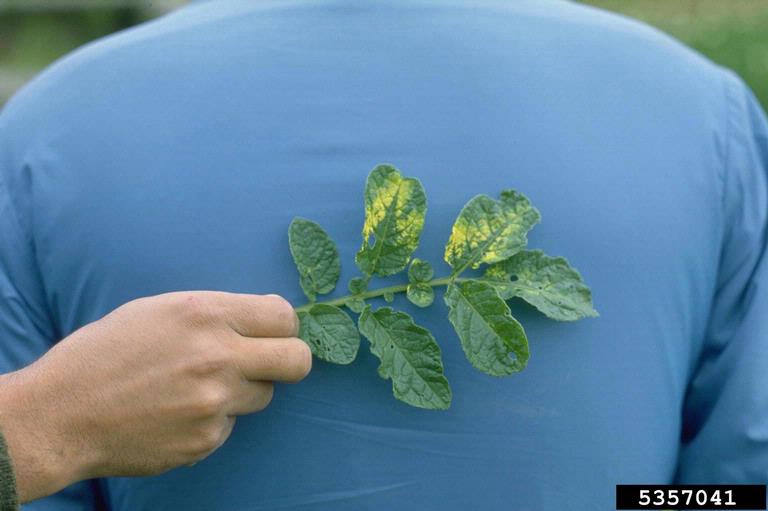
What plants are affected?
The main host of Potato mop-top virus is potato (Solanum tuberosum). The weeds black nightshade (Solanum nigrum) and white goosefoot (Chenopodium album) can sometimes be infected.
Image: William M. Brown Jr.,Bugwood.org
- Slightly raised lines and rings on the surface of potato tubers.
- Misshapen tubers.
- Brown flecks, arcs or lines inside the tubers.
- Yellow blotches or ‘v’ shaped chevrons on the leaves, distortion of leaflets or shortening of internodes causing a dwarfed appearance (mop-top).
- There may not be any leaf symptoms.
|
Potato infected with potato mop-top virus (PMTV) Photo: Department of Natural Resources and Environment Tasmania |
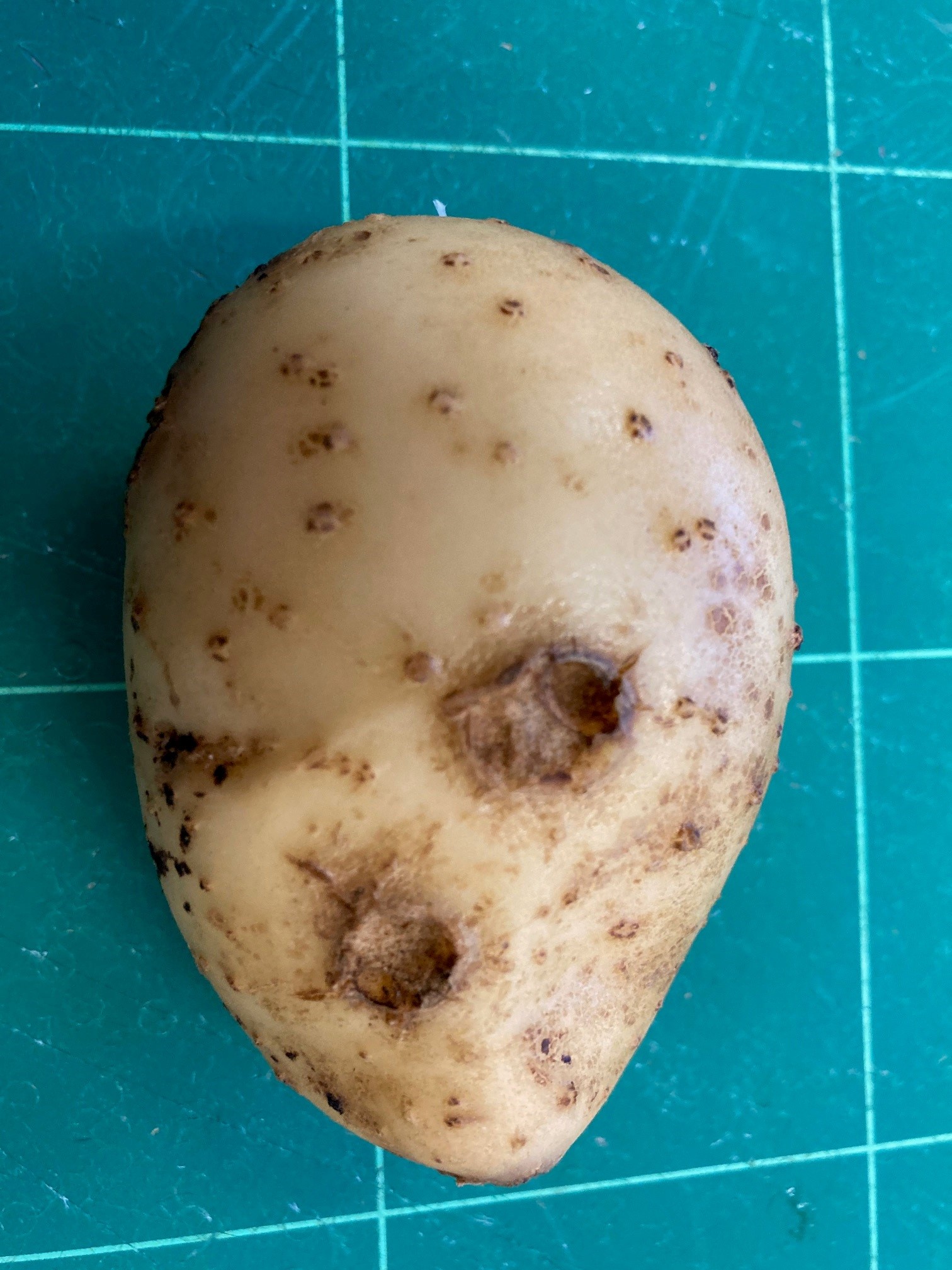 |
|
Cut potatoes with PMTV Photo: Department of Natural Resources and Environment Tasmania |
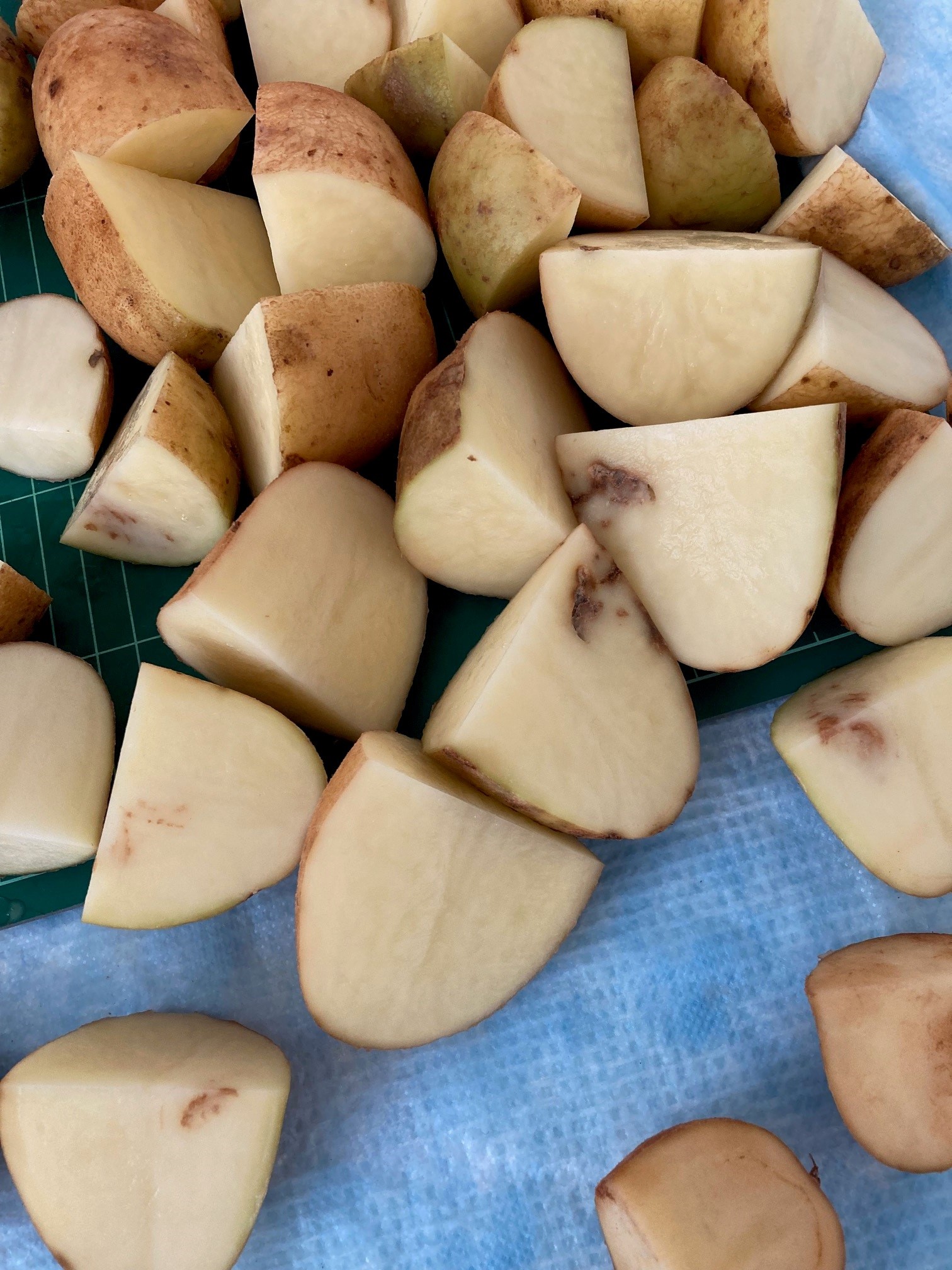 |
|
PMTV in cut potato Photo: Department of Natural Resources and Environment Tasmania |
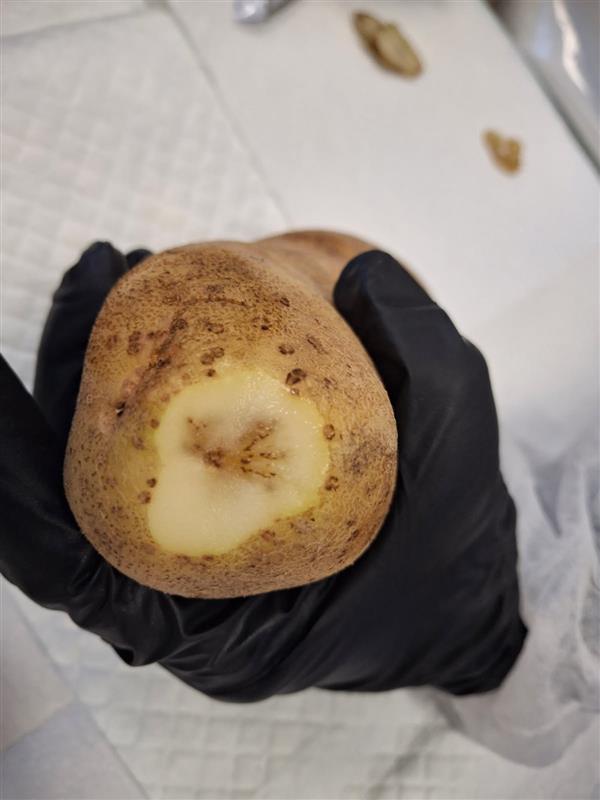 |
Potato tubers with symptoms of Potato mop-top virus are downgraded or rejected for sale. Crop losses can be severe in some varieties.
Legal duty to report
Potato mop-top virus is not known to occur in WA.
Pomovirus solani is a declared pest under section 12 of the Biosecurity and Agriculture Management Act 2007.
This means that any person who finds or suspects the presence of Potato mop-top virus must report it to DPIRD.
WA’s freedom from Potato mop-top virus is supported by general and specific surveillance and specific import requirements to prevent its entry.
How does Potato mop-top virus survive and spread?
- Potato mop-top virus is spread by a soil-borne potato pathogen called powdery scab (Spongospora subterranea), which is widespread in Western Australia. The virus is passed to the potato plant when powdery scab infects the roots or tubers.
- Potato mop-top virus can survive in powdery scab spores in the soil for at least 12 years.
- The virus can also be passed on to daughter plants if the mother tuber used for propagation was infected.

